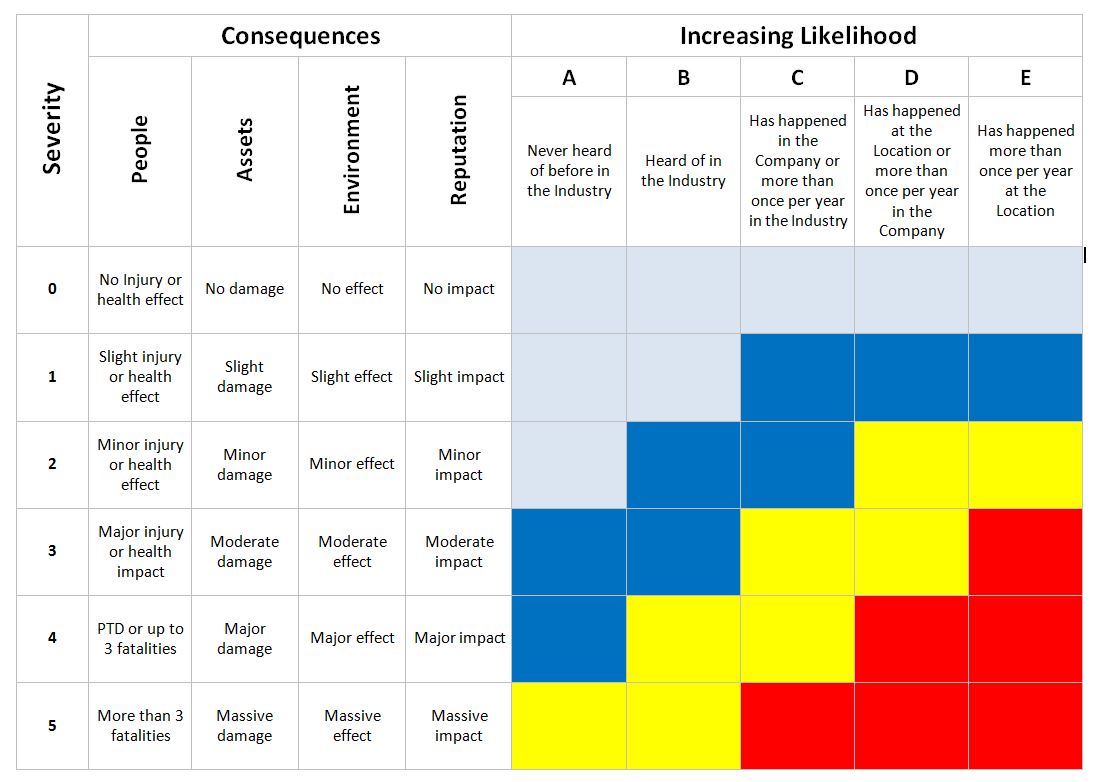Risk Assessment Steps

The starting point for a RAM assessment is an understanding of the Hazard in its context (activity, location, etc.), or an understanding of the particular potential incident being considered.
An assessment consists of the following steps.
Step 1. Identify potential consequences (credible worst-case scenario)
Identify the consequences that could result from a release of the Hazard under the prevailing conditions. Ask the question: “What could happen if the controls don’t work or they fail?”
For example, the operation of a pump in crude oil service involves the potential for a release of crude oil in the event of a pump seal failure. Some of the consequences that could result may be:
- Leak of crude oil into the drain system and then spilling into the sea.
- Ignition of the crude oil resulting in a small fire around the pump.
- Inadequate fire fighting equipment due to lack of planning and escalation of the fire to the point where other process equipment fails and a major fire and explosion occur.
Step 2. Estimate the Severity of each potential Consequence
For each of the identified potential consequences assess the Severity (0 – 5) in the four Consequences categories – people, environment, assets, and reputation (PEAR).
In the crude oil pump example above, for the consequence in which crude oil leaks from the pump seal and flows through the drain system into the sea, there could be impacts in 3 Consequence Categories – asset, environment, and reputation.
Step 3. Estimate the Likelihood
For each of the potential consequences make an estimate of the Likelihood of the Consequence in terms of the Likelihood levels A to E. The Likelihood level should be judged from past experience, by asking the question: “How often in the past has a hazard release resulted in a Consequence similar to the one that we are considering?”
The approach is one of applying knowledge of historical events to predict the future. Draw on the collective experience around the table and do not confine your thinking to any particular location or company.
The estimate of Likelihood should be based on the Likelihood of the particular Consequence under consideration, not on the Likelihood of the Hazard being realized or incident occurring.
In the example above an estimate should be made of the likelihood of the crude oil pump seal leak resulting in oil into the sea, not the likelihood that the pump seal will leak.
Step 4. Estimate the risk rating
For each potential Consequence determine the risk rating for each of the applicable PEAR categories in terms of the product of the Consequence Severity and the Likelihood. The risk ratings (up to 5 for each potential Consequence) can be plotted on the matrix to provide a visual representation of the risk profile of the hazard release scenario under consideration.



What is PTD?
Hi Eion, thanks for the question.
PTD stands for Permanent Total Disablement
Everyone loves what you guys are up too. This kind of clever work and
coverage! Keep up the good works guys I’ve added you guys to my own blogroll.